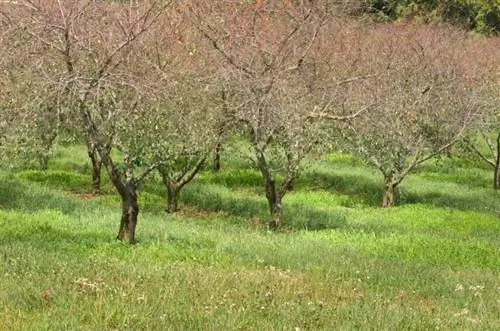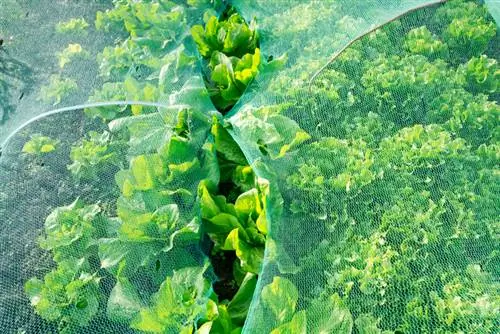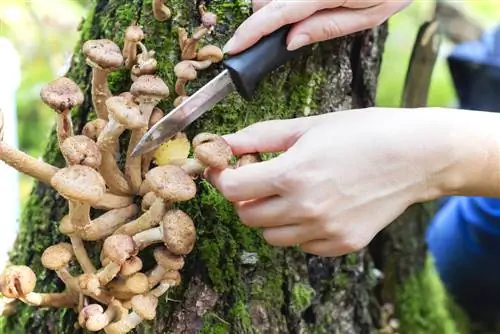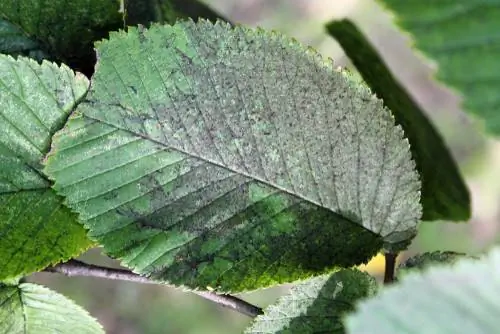- Author admin [email protected].
- Public 2023-12-16 16:46.
- Last modified 2025-01-23 11:21.
Mushroom lovers value the honey mushroom, which often appears in abundance on tree stumps in autumn, as a delicacy - even if it is poisonous when raw and must therefore be boiled before each use. However, the fungus is a parasite feared by foresters and gardeners, as it quickly causes infected trees to die and also spreads quickly. Fighting it is difficult.
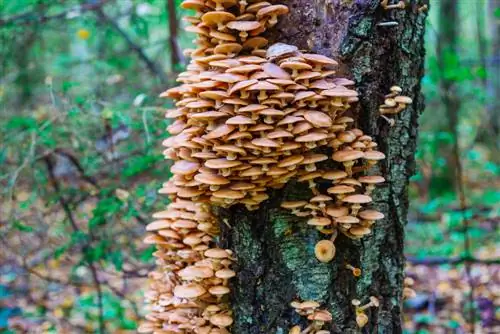
How can you combat honey fungus in the garden?
In order to effectively combat honey fungus, infected trees and their roots must be cleared, infected dead wood must be removed and the soil in the infected area must be generously replaced. This will prevent the fungus from spreading and protect he althy trees.
Hallimasch attacks dead and also living wood
Armillaria mellea or honey fungus or honey fungus is a wood-destroying fungus whose soil-living organism is made up of individual fungal threads - called hyphae. The honey fungus can be found primarily on tree stumps and dead wood, but also thrives on weakened or stressed wood. Trees that suffer from drought, nutrient deficiencies or diseases are particularly at risk of infestation. Honey ash infests almost all tree species as long as organic material can be broken down there - the parasite feeds on dead, rotting substances.
How to recognize a honey fungus infestation
Even before the fruiting bodies appear, a number of signs point to an infestation with honey fungus. Initially, the growth of the affected tree slows down significantly, and eventually individual branches may die off completely. A peeling of the bark is also typical, revealing a white, flat-growing mycelium underneath. Conifers can begin to produce resin in the lower trunk area and on the roots; the needles typically turn brown to brown-red. The infection occurs through spores, spreading root-like, black strands (so-called rhizomorphs) and root contact, with the honey fungus primarily using injuries as a portal of entry.
Effective control is only possible through deforestation
The fungus usually penetrates the root area, from where it works its way up into the bark and into the cambria and damages the affected tree by disrupting or cutting off the supply channels. The honey fungus cannot be fought directly. The only option is to remove the tree or trees in question and their roots from the garden. Dead wood infected with honey fungus (e.g. tree stumps left standing) should also be removed to prevent the fungus from spreading and infecting he althy trees. The soil at the infected area should also be dug up and generously replaced with new material.
Tip
Before you remove the honey mushroom, it is best to first harvest its fruiting bodies. The edible mushroom, which occurs in large quantities, can also be preserved very well by freezing and drying.


